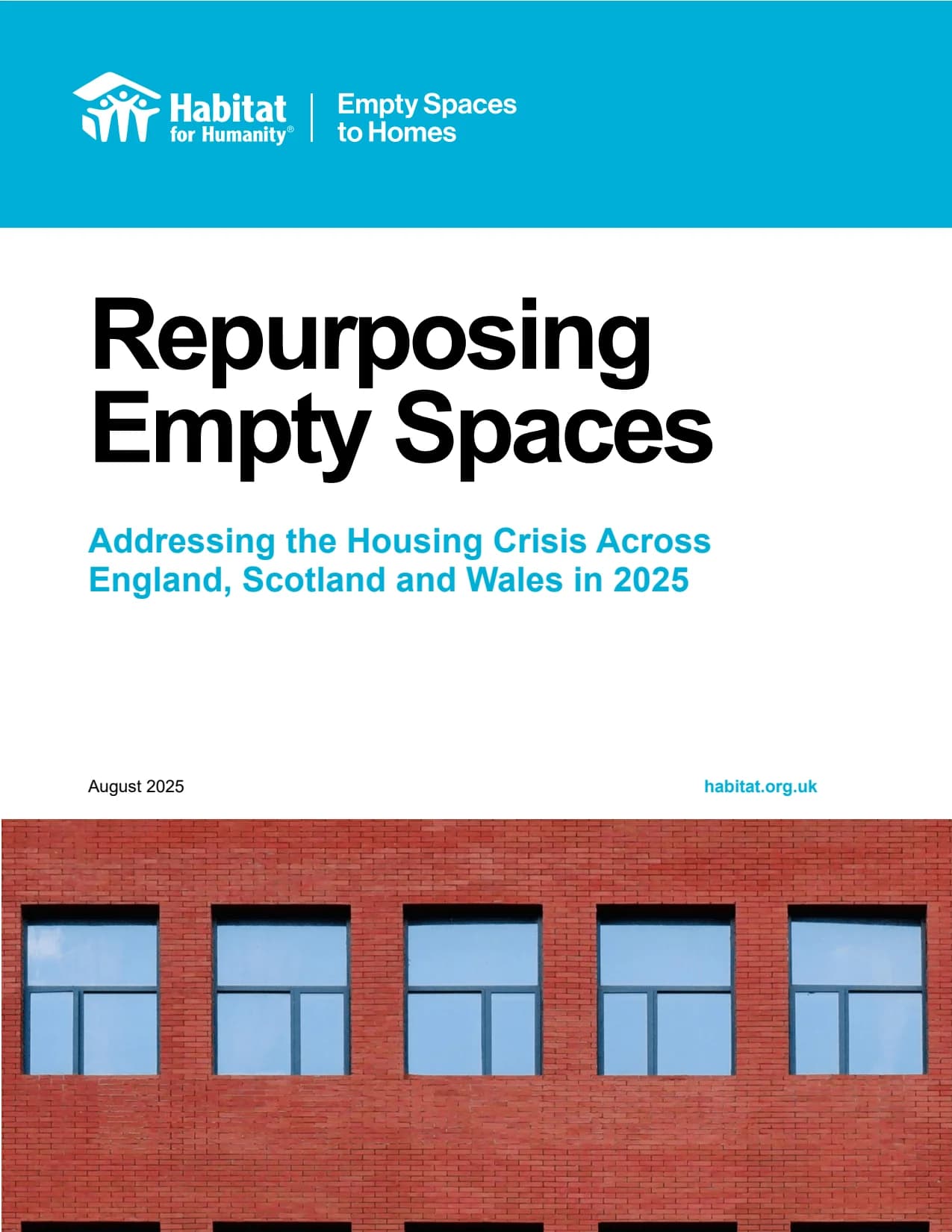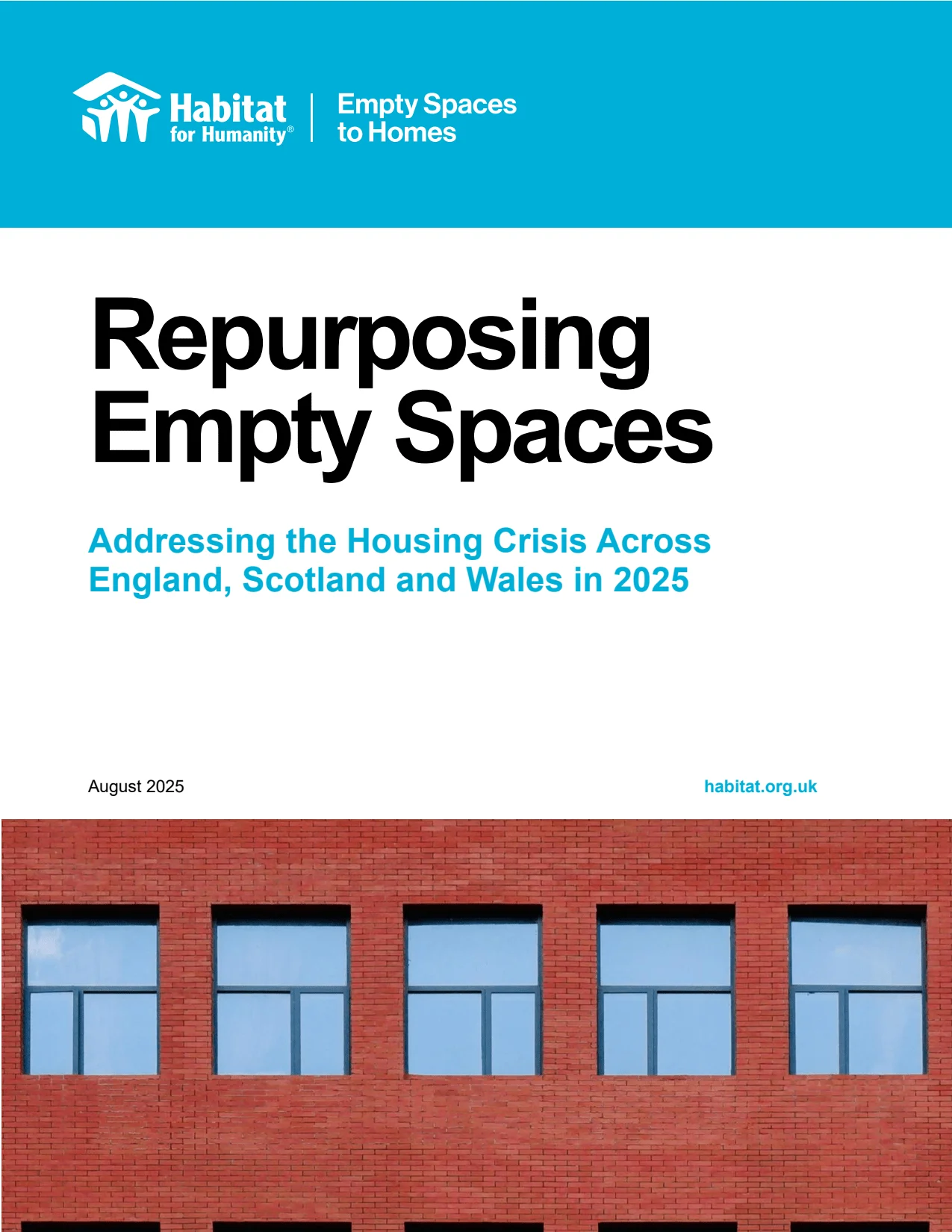🏡Context and Purpose
The report titled "Repurposing Empty Spaces - Addressing the Housing Crisis Across England, Scotland and Wales in 2025" was commissioned by Habitat for Humanity Great Britain and produced by The Empty Homes Network. It aims to address the critical housing crisis in the UK by exploring the potential of repurposing vacant non-residential buildings into affordable housing. This initiative highlights the growing need for sustainable housing solutions amid rising homelessness and economic pressures.
🌍The Housing Crisis
As of March 2025, over 131,000 households in England were living in temporary accommodation, including more than 169,000 children. This alarming statistic reflects a broader crisis, with millions facing unaffordable housing. The report emphasizes that thousands of empty commercial buildings could be reimagined as part of the solution, particularly those owned by local authorities struggling with rising temporary housing costs.
📊Key Research Findings
The report reveals that commercial vacancy rates are rising across the UK, with local authority-owned properties increasing from 6,324 to 8,242. Additionally, over 25,000 new homes could be created by converting vacant local authority-owned offices and shops. These findings underscore the untapped potential for local authorities to take action against the housing crisis using existing assets.
📈Regional Disparities
The data show significant regional disparities in vacant properties. In England, the average number of vacant properties per council increased by 30%, while Scotland and Wales saw increases of 18% and 44%, respectively. This highlights varying vacancy pressures across regions, with Wales experiencing notable shifts from retail to office and leisure vacancies.
🔍Successful Examples
Several standout examples of repurposed vacant spaces are noted in the report. Successful initiatives were often enabled by strong local political leadership, access to funding, and cross-departmental coordination, involving housing, planning, and regeneration teams. These examples illustrate the potential for local authorities, housing associations, and community organizations to collaborate effectively.
💰Economic Implications
The report emphasizes that maintaining empty buildings drains public resources, with councils incurring significant costs for their upkeep. Utilizing these vacant properties for housing could not only alleviate housing shortages but also represent a more efficient investment compared to ongoing temporary accommodation expenses.
🌱Environmental Benefits
Repurposing existing structures contributes to environmental sustainability by reducing the carbon footprint associated with new construction. The report advocates for a shift in focus from new builds to reusing existing buildings, aligning with climate action goals.
📅Policy Recommendations
The report calls for a national strategy to treat vacant commercial properties as a cross-cutting policy opportunity. This includes developing a standardized dataset on publicly-owned vacant property and aligning housing, planning, and economic development objectives. Enhanced support for local authorities to repurpose these assets is deemed essential for effective housing solutions.
🔗Conclusion
The findings and recommendations in this research highlight the urgent need for innovative housing solutions in the UK, focusing on the repurposing of empty spaces as a viable strategy to address the housing crisis. By unlocking the potential of vacant properties, local authorities can contribute significantly to creating sustainable, affordable housing and revitalizing communities.

